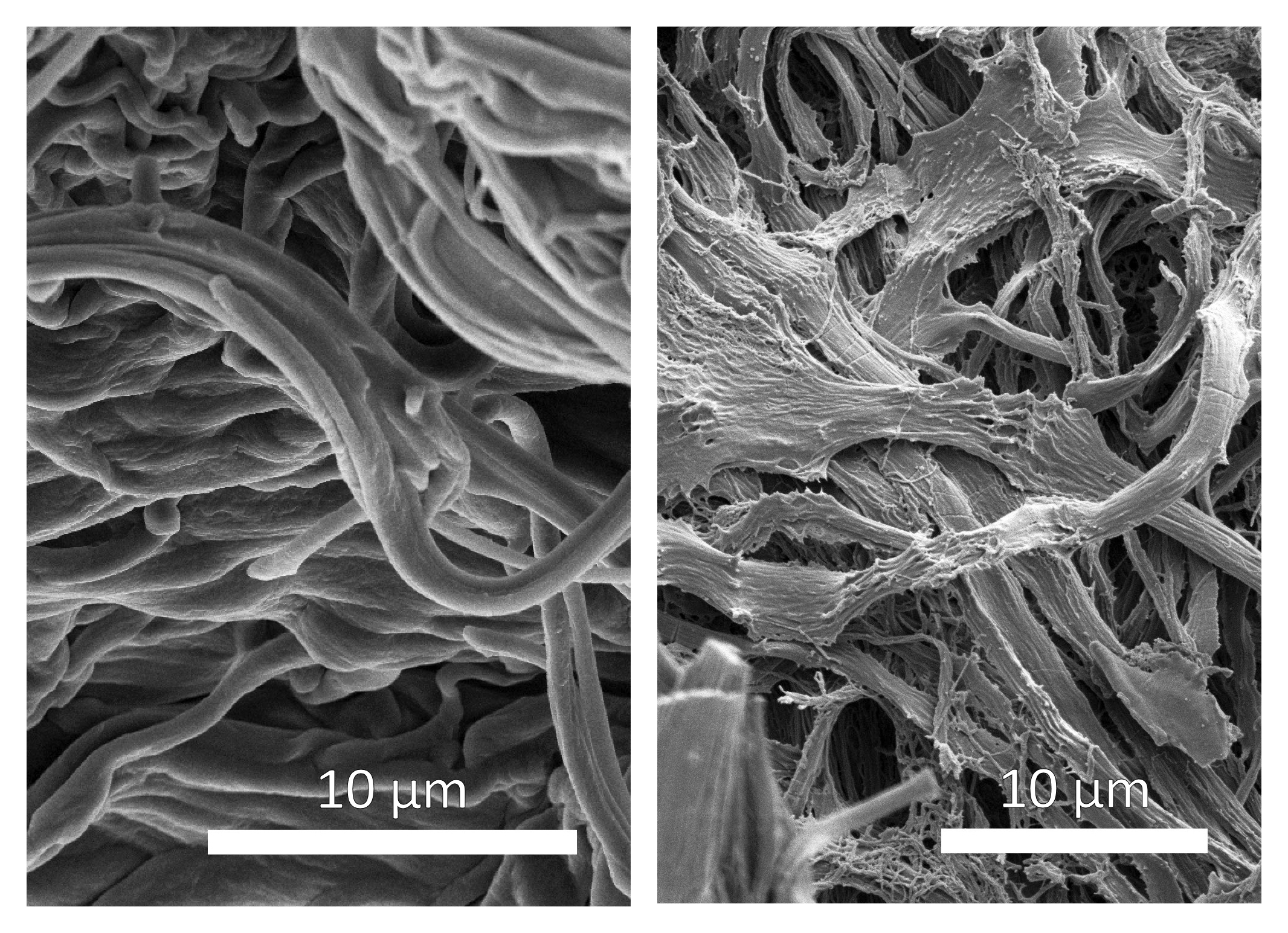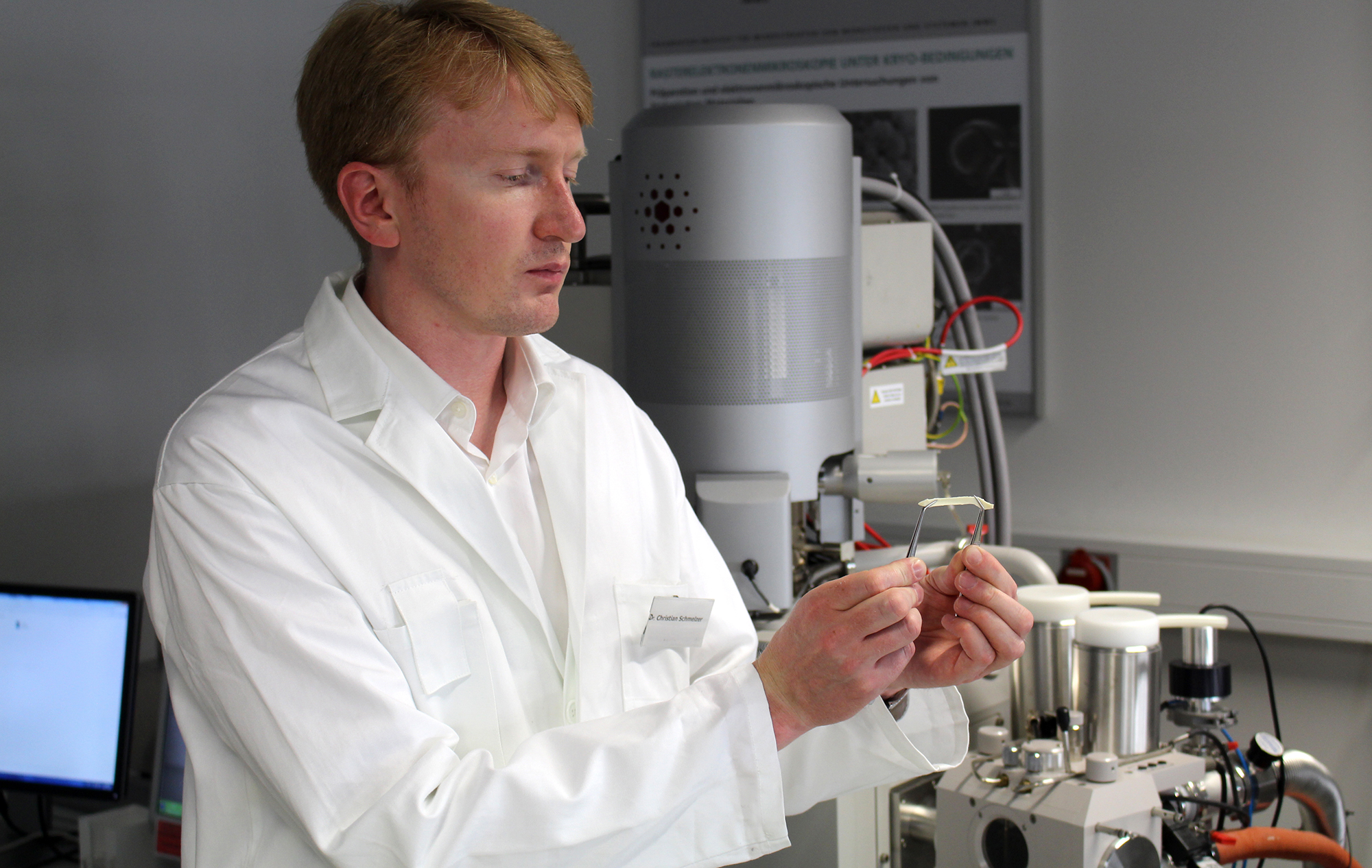Fraunhofer IMWS develops bio-based composite materials for the skin
The Fraunhofer Institute for Microstructure of Materials and Systems IMWS is developing new biomaterials for dermal application in the project »SkinNext«. The researchers in Halle use the unique properties of the natural fibre proteins elastin and collagen for this. These have great potential for use in the fields of dermatology and cosmetics, such as for improved wound healing after burn injuries.

The care of badly healing skin injuries, for example in chronic wounds or burn wounds, is a medical challenge: Apart from human and animal skin grafts, which are only available in very limited quantities, frame structures made of synthetic polymers are mainly used to cover wounds. However, these materials can stay only temporarily on the wound and are not as elastic as healthy skin: this results in contractions and tensions. This is not just unpleasant for the patient, but also increases the risk of the healing process not functioning properly.
This is where the project »SkinNext« comes in, which has targeted the development of innovative biomaterials for dermal applications. The natural fibre proteins elastin and collagen set the parameter. The fact that skin, lung tissue, blood vessels or cartilage are equally elastic, robust and resistant to cope with a lifetime worth of stress, is primarily due to the interaction of these two proteins: collagen fibres show an extremely high level of tensile strength and in this way lend stability to tissues. Elastin also has complementary properties and is a main component of the elastic fibres responsible for elasticity and tensile strength of many tissues.
Dr Christian Schmelzer, who manages the project »SkinNext« at Fraunhofer IMWS, has focussed for many years on the development of elastic fibres in human tissue and their damage through aging processes and disease. He is an internationally renowned expert in this field and before his work at the Fraunhofer IMWS was active in the Faculty for Biology at the Technion in Haifa (Israel), for example, and led the elastin working group at the Institute for Pharmacy at the Martin Luther University in Halle-Wittenberg, where he continues to lecture. He was given several awards for his dissertation on the subject »Mass Spectrometer Characterisation of Protein Hydrolysates: Digestion Studies of β-Casein and Examination of Elastin Structures«.
»Elastin is a fascinating protein with extraordinary mechanical and biochemical properties. However, it belongs to the few proteins, which are formed by the body only once. Also, elastin is not really renewed in the case of an injury. Therefore scar tissue does not have the same properties as healthy skin. Above all, this often leads to problems with large surface injuries« says the 39 year old scientist.
In the five year planned project, and together with his team, he wants to combine start materials, which are based collagen and elastin to create innovative biomaterials. »These natural start materials combine compatibility, durability and biological degradability with favourable mechanical properties« explains Schmelzer the benefits of the approach. The optimum design of the new materials comes with the comprehensive characterisation at the microstructural and molecular level. Techniques such as electron microscopy and organic mass spectrometry allow you to find out whether the materials really can improve the structure and properties of the newly created tissue and whether they can minimise scar formation. Biomaterials should thus be created by and by, which are superior to current solutions and can be produced as cost effectively as possible.
»The project fits nicely into the strategic onward-development of the Fraunhofer IMWS. We bring in our competences in microstructure diagnostics and in microstructure based material design and with this open up the possibility to build up new quality in the material scientific diagnostics of human soft tissue« says Professor Ralf B. Wehrspohn, Director of the Fraunhofer IMWS. »I am very happy that we managed to get Mr Schmelzer as part of the Fraunhofer Attract Support Programme for our institute to advance elastin based composite materials close to the market towards application.«
